I became fascinated with lifting stones when I read an article in MILO a few years ago about a man in New Zealand named Regan Bridge. A man not much bigger than me — who was lifting stones over 400 pounds. He literally picked up rocks for twenty to thirty minutes every day. Now, I’m not saying we should ditch all our other training equipment and just lift stones, but the value of including of this practice in our training is worth considering.
The Long Tradition of Lifting Stones
Strength challenges have existed for as long as men have been around other men, and for a long time, this involved lifting stones. You were not considered a man in Scotland, for example, until you could lift a “manhood stone” to waist height. For example:
- The Inver Stone – 121.6 kg (268 pounds)
- The Dinnie Stones – two stones that totaled 333 kg (734 pounds)
- The Menzies Stone – 115 kg (253.5 pounds)
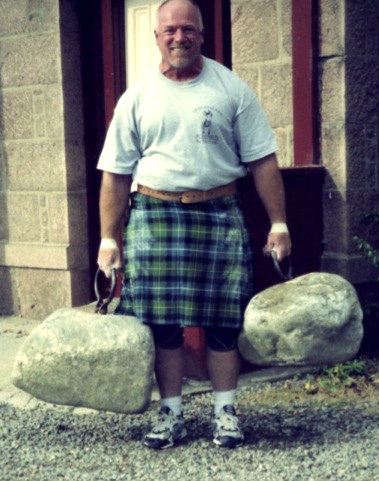
In Welsh tradition, boys also had to lift certain stones to waist height to be considered a man. There were no set sizes, just what was locally available or deemed heavy enough by the local king. One of these — the Garreg Orchest — is still in place in the town of Criccieth in Gwynedd, North Wales. There are three levels of lifting this stone: break the ground, waist height, and shoulder height. People travel from all over to test themselves against this 392lb stone – and there has been one successful lift so far this year.
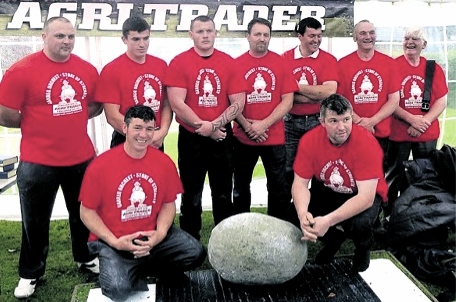
In Iceland, four stones were used to qualify men to work on fishing boats. Four different stones were to be lifted to a ledge at hip height:
- fullsterkur – “full strength,” weighing 155 kg (341 pounds)
- hálfsterkur – “half strength,” 104 kg (228.8 pounds)
- hálfdrættingur – “weakling,” 49 kg (107.8 pounds) and
- amlóði – “useless,” 23 kg (50.6 pounds)
The 49kg weakling stone lift met the minimum requirement to qualify for fishing boat work. Lifting only the 23kg stone, however, qualified you as “useless” in Iceland’s fishing industry.
How Lifting Stones Aligns With StrongFirst
Strength is a skill to be practiced, as StrongFirst regularly reminds us. I have discovered that lifting stones will build a certain kind of strength that cannot be attained using other implements. It will reveal gaps in your ability to create tension and in setting the position of your trunk.
When lifting a stone, you first need the requisite mobility to pull yourself into a deep squat while having your hands on a fixed object. There are two places you can optimally stabilize your spine and trunk: one is while standing, and the other is in the bottom of a deep squat with an upright torso. (It can be done in other positions, but it is not nearly as effective.)
This is exactly what children do when trying to lift a heavy object. They will first explore the best way to lift the object in the deep squat and figure out how to grip it. If they feel comfortable, they will set spinal position and then come up into the hinge (deadlift position) to lift the object. If they cannot get a good grip, they will not pick the object up. Using this approach will quickly expose any holes in your breathing and bracing strategies and your ability to effectively stabilize your trunk.
If you remember the old homunculus from anatomy, your fingers and hands have a lot of neurons dedicated to them in your brain — and your brain knows better than to allow you to lift things your hands cannot grip. If you try to lift the exact same stone from two different angles, it is likely one will feel like a challenging deadlift, while the other won’t even budge. If your brain does not get a clear signal from your hands that you have a good grip, it will not let you fire the muscles to get the stone off the ground.
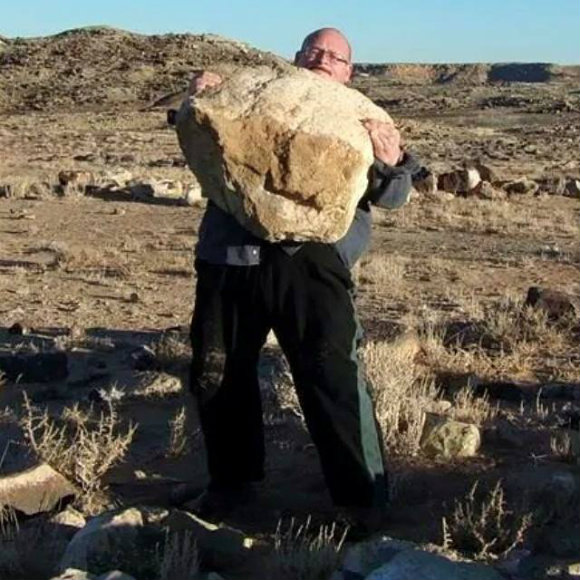
Pavel Said Work Your Grip and Abs
This is where a favorite lesson from Pavel becomes evident. When pressed for time, work your grip and abs. I have traveled and taught and worked with enough athletes to see the wisdom in this advice. The more people you work with, the more you will notice the two big limiters in performance are grip strength and abdominal wall strength (for this purpose I mean all muscles between your rib cage and pelvis, front and back; I do not like the word core, I prefer trunk — it makes me think of a big tall strong oak).
But beyond just abdominal wall strength is the ability to brace effectively. How people breathe and set the relationship between their rib cage and pelvis dictates how well they can brace their trunk muscles.
Grip work can take many forms, but I prefer the Captains of Crush grippers by Ironmind and Grip4orce handles. The grippers for low-rep grease-the-groove work, and the Grip4orce handles for grip strength endurance work. These are also great for farmers carries, because in addition to increasing handle diameter, you have to squeeze to keep them secured around the handle of whatever you are lifting or carrying.
Or you can keep a couple big odd-shaped stones in your yard. They will train both.
Add Stones to Your Training
Basic levels of strength are not the norm in today’s American society. I am not saying we should have four stones to prove if you are “useless” or not, but the motto of StrongFirst – strength has a greater purpose – is a motto worth adopting.
Most of the people who come to my clinic just need a basic level of strength competency to make dramatic improvements in their life. Practice and play with lifting natural stones, and you may be surprised how those strength skills improve other parts of your life and lifting.
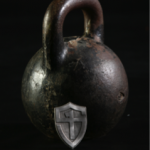


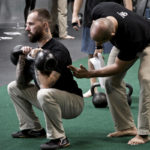
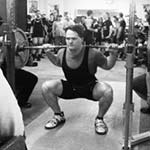

Check out Steve Jeck at Ironmind and his book “Of Stones And Strength” co-authored with Peter Martin published in 1996…very educational and inspiring read into famous stone lifting history from Scotland through Tahiti along with his Scotland Stone Lifting tour in 1995.
Travis,
An excellent article and you mention two of my favourite and most respected stone lifters in Bud and Regan- awesome strength. I would give you one bit of advice however and that is I would try and refrain from mentioning cultural aspects of Gaelic stone lifting as the history you mention is incorrect. I realise that it is written with good intention but what is worrying for me is that you have referenced from somewhere that the Welsh stones were lifted to prove manhood? Now having found the Criccieth stone I set the ball rolling with Roger Davis finding many more Garreg Orchest in Wales and his pending book is presently being proof read by the foremost Welsh Cultural Historian. Being partly the catalyst for this work I have been fortunate to have read the book draft – there is no mention of lifting to prove “manhood”. With the exception of a single stone I have visited personally all of the presently known Garreg Orchest. I appreciate that your narrative is wholly about the dynamics of lifting and that the history is simply an assertion of cultural strength but what I would not wish, nor do I think that you have any personal intention to do so, is to apply the same cultural reasons for lifting Scottish stones to the Welsh stones. Roger and myself have discussed the probability of it happening and indeed your article appears to be the first to do so. Scottish Gaelic cultural aspects of stone lifting have been romanticised to the hilt with dare I say some poor research into the subject.
Bud Jeffries is actually aware that I have just recently returned from Gaelic North Uist where I have managed to add further stones to my database of about 150 known lifting stones in Scotland with about a third still extant, so I do have some knowledge on the subject. Believe me in that trying to rectify the history of Scottish stone lifting is no easy feat with so many erroneous writings on the subject which are available and are tended to be believed but with the Welsh stones being “virgin” to most in the world of strength, I would be obliged if you could let me know where the “manhood” and Welsh stones was referenced from in order that this can be nipped in the bud before it expands any further.
Again a great article with the exception of the minor history.
Yours
Peter
Thank you for the comment Peter. I have referenced you on several occasions and at least once on our MobilityWOD videos when I talked about lifting stones. I wanted to apply some history of the art of stonelifting but as you mentioned in your comment finding quality history when all you have available to research is the internet is quite difficult. I was combing the history of stone lifting in different regions as discussed on the Wikipedia page available for lifting stones (unfortunately it was the only place I was able to find any information about the history associated with the practice in different area). I do not claim to be a historian of the subject, just using the info I found available. I much admire your work on the subject as it fascinates me and I would enjoy getting to know more and be able to travel and try my hand at lifting some of them. I appreciate the feedback and as you mentioned this is more about the use of lifting stones in training, I was just looking to add some historical context to the practice. If you’d wish to discuss further, email me travis@mobilitywod.com. I would enjoy continuing this conversation.
Being a fellow DC and CrossFit/K-Bell enthusiast, I loved the article. Keep spreading the word brother, I’m listening.
Thanks Dr Steve! I’ll keep it coming!
Thanks for posting my pic in this blog gentlemen.
An essential inclusion, Sir!
I don’t think it could be an article about lifting heavy stuff without a Bud Jefferies cameo